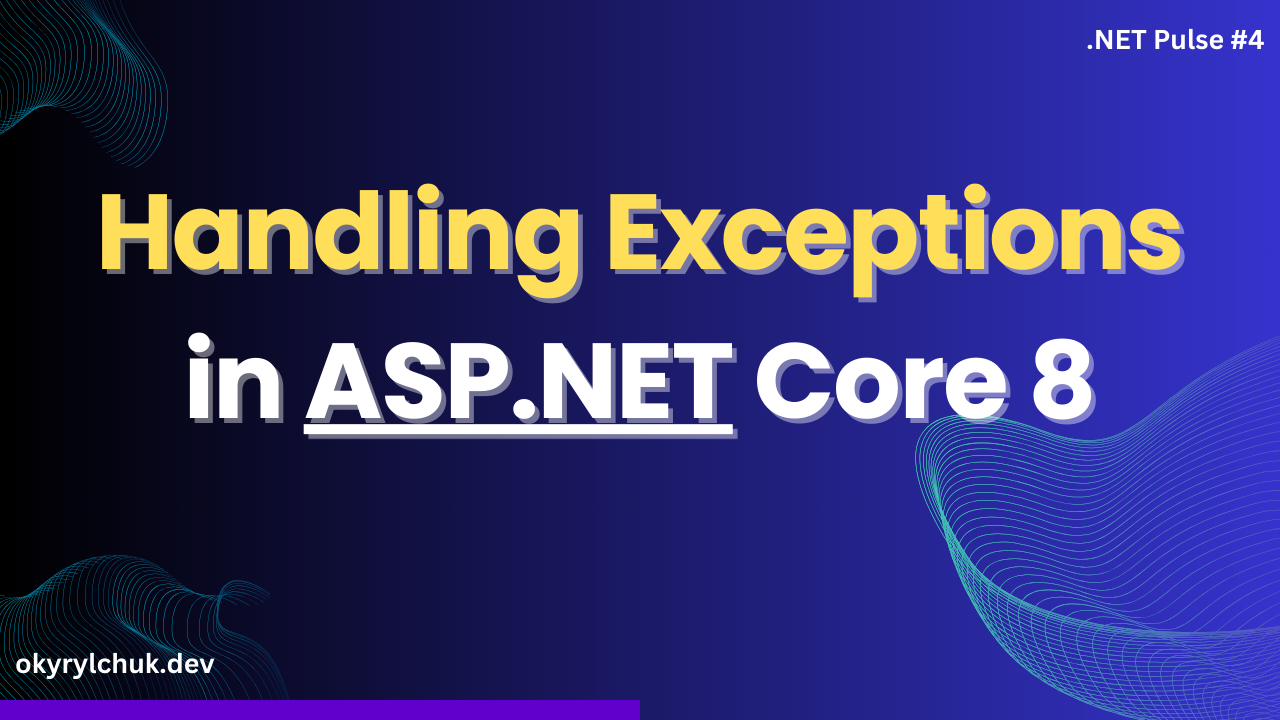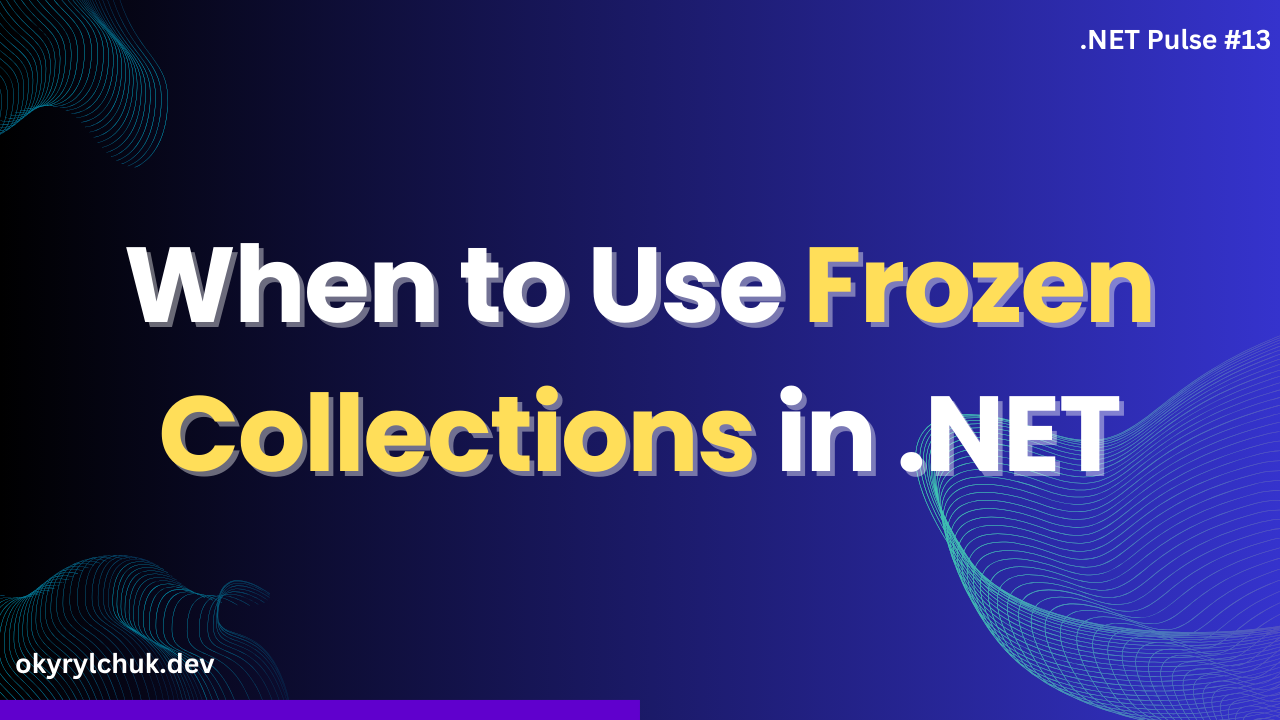.NET 6 introduced the Minimal APIs feature. It simplifies building lightweight HTTP services with minimal code and ceremony. The idea is to reduce the boilerplate code needed to create a basic web API or service, making it more approachable for small applications and microservices.
Each subsequent version of .NET improves minimal APIs. Let’s see what .NET 8 brings.
Antiforgery Tokens
.NET 8 introduces a middleware for validating antiforgery tokens. They are used to mitigate cross-site request forgery attacks.
You can register antiforgery services in a dependency injection container by calling the AddAntiforgery() method. Then, call the UseAntiForgery() method in IApplicationBuilder to add the anti-forgery middleware to the pipeline.
var builder = WebApplication.CreateBuilder(args);
builder.Services.AddAntiforgery();
var app = builder.Build();
app.UseAntiforgery();
app.MapGet("/", () =>
Results.Extensions.RazorSlice("Slices/Home.cshtml"));
app.Run();
This feature is not accidental. You need antiforgery tokens if you want to use Forms. Previously, you could use Forms only for sending files in Minimal APIs.
.NET 8 extends explicit binding to Form values using the [FromForm] attribute. Let’s directly jump into it.
Binding to Forms
As I mentioned, you could use Forms in Minimal APIs to upload files. Let’s refresh our minds on how we can do it.
As Minimal APIs don’t offer any built-in tooling for working with HTML, I use Razor Slices, a great library for returning HTML from Minimal APIs.
You could notice the line in the first sample.
app.MapGet("/", () => Results.Extensions.RazorSlice("/Slices/Home.cshtml"));
Like with Razor, you can create cshtml pages and return rendered HTML from Minimal APIs.
Let’s create a simple Form for uploading a file.
<form action="/upload-file" method="POST" enctype="multipart/form-data">
<input type="file" name="file" />
<input type="submit" />
</form>
The Minimal API implementation.
app.MapPost("/upload-file", async ([FromForm] IFormFile file) =>
{
string fileName = Path.GetRandomFileName();
await using var stream = File.Open(fileName, FileMode.Create);
await file.CopyToAsync(stream);
});
You could add details to the Form with files.
<form action="/upload-file" method="POST" enctype="multipart/form-data">
<input type="file" name="file" />
<input type="text" name="description" />
<input type="submit" />
</form>
However, getting values from Form could be more convenient.
app.MapPost("/upload-file", async ([FromForm] IFormFile file, HttpRequest request) =>
{
var form = await request.ReadFormAsync();
var description = form["description"];
});
Let’s create a standard Form without files.
<form action="/submit-form" method="POST">
<input type="text" name="name" />
<input type="text" name="description" />
<input type="submit" />
</form>
And the corresponding endpoint implementation.
app.MapPost("/submit-form", async ([FromForm] string name, [FromForm] string description) =>
{
});
This implementation doesn’t work in .NET 6 and 7. You get the error.
NotSupportedException: IFromFormMetadata is only supported for parameters of type IFormFileCollection and IFormFile.
In .NET 8, binding to Form values is now supported. The code above works. However, you need to add one missing piece. Remember about antiforgery tokens? Without it, you get an error.
AntiforgeryValidationException: The required antiforgery cookie “.AspNetCore.Antiforgery.QYcNn7wwpwA” is not present.
Let’s get back to our home endpoint and add it.
app.MapGet("/", (HttpContext context, IAntiforgery antiforgery) =>
Results.Extensions.RazorSlice(
"Slices/Home.cshtml",
antiforgery.GetAndStoreTokens(context)));
And set the antiforgery token in our Form.
<form action="/submit-form" method="POST">
<input name="@Model.ForFieldName" type="hidden" value="@Model.RequestToken" />
<input type="text" name="name" />
<input type="text" name="description" />
<input type="submit" />
</form>
Now everything works perfectly.
You can disable the antiforgery token validation on the endpoint by calling DisableAntiforgery(). However, it’s not recommended.
app.MapPost("/submit-form", async ([FromForm] string name, [FromForm] string description) =>
{
})
.DisableAntiforgery();
Minimal APIs in .NET 8 also support binding complex types.
app.MapPost("/submit-form", async ([FromForm] Person person) =>
{
// do something with person
});
public record Person(string Name, string Surname);
IResettable Interface
First, we need to understand ObjectPool in ASP.NET Core. It’s part of the ASP.NET Core infrastructure that supports keeping objects in memory for reuse rather than allowing them to be garbage collected.
ASP.NET Core has had this feature from the beginning. However, the IResettable interface is new in .NET 8. It allows the object to be automatically reset when returned to an object pool.
Let’s see how we can add an object pool to our application.
builder.Services.TryAddSingleton<ObjectPoolProvider, DefaultObjectPoolProvider>();
builder.Services.TryAddSingleton(serviceProvider =>
{
var provider = serviceProvider.GetRequiredService<ObjectPoolProvider>();
var policy = new DefaultPooledObjectPolicy<ReusableBuffer>();
return provider.Create(policy);
});
That’s how you register ObjectPool in the application. In the first line, you register the DefaultObjectPoolProvider as ObjectPoolProvider. Then, you register your ObjectPool. In my case, it’s for the ReusableBuffer type, which implementation you can see below.
public class ReusableBuffer : IResettable
{
public byte[] Data { get; } = new byte[1024];
public bool TryReset()
{
Array.Clear(Data);
return true;
}
}
Notice that the ReusableBuffer implements the IResettable interface. It has one method TryReset(), which resets the object to a neutral state.
Let’s see how we can use the object pool in our application.
app.MapPost("/buffer", (ObjectPool<ReusableBuffer> bufferPool) =>
{
ReusableBuffer buffer = bufferPool.Get();
// do something with buffer
// here TryReset is called to reset the buffer ot its initial state
// because this type implemens IResettable interface
bufferPool.Return(buffer);
});
Summary
In this post, I showed you three new features in Minimal APIs in .NET 8. The Antiforgery tokens are essential for security reasons when using POST Forms. And now, you can bind Form values in Minimal APIs. The IResettable interface can make your life easier when you use ObjectPools in your application.

